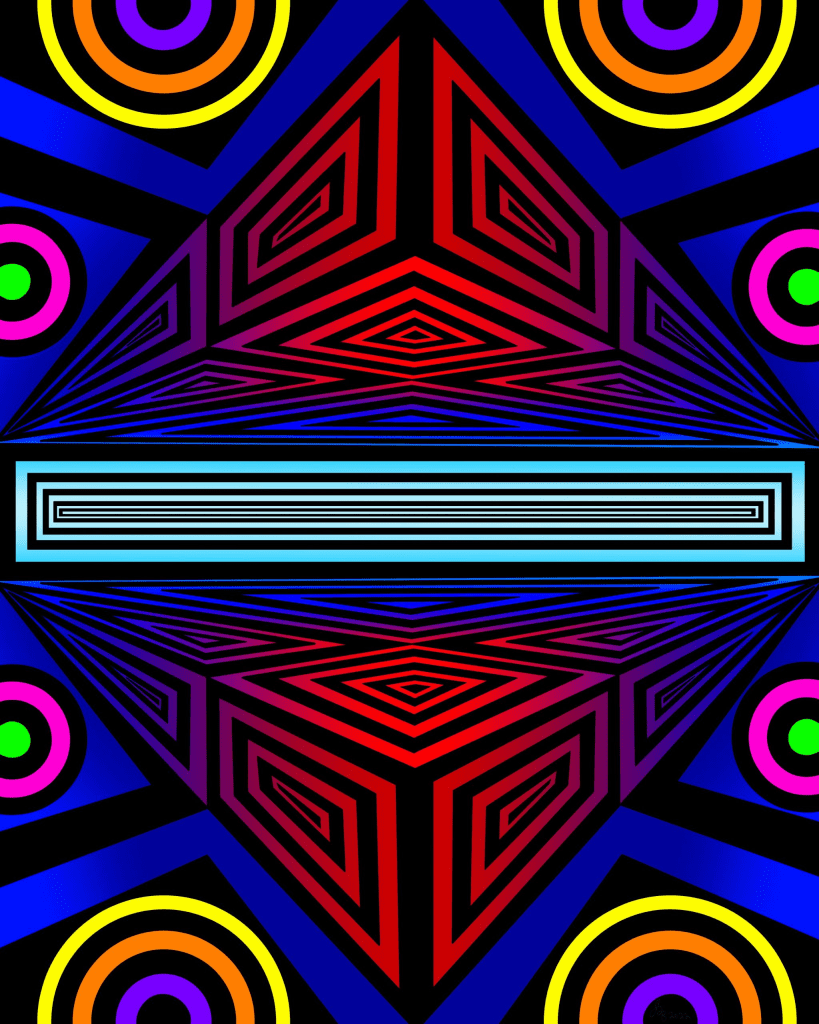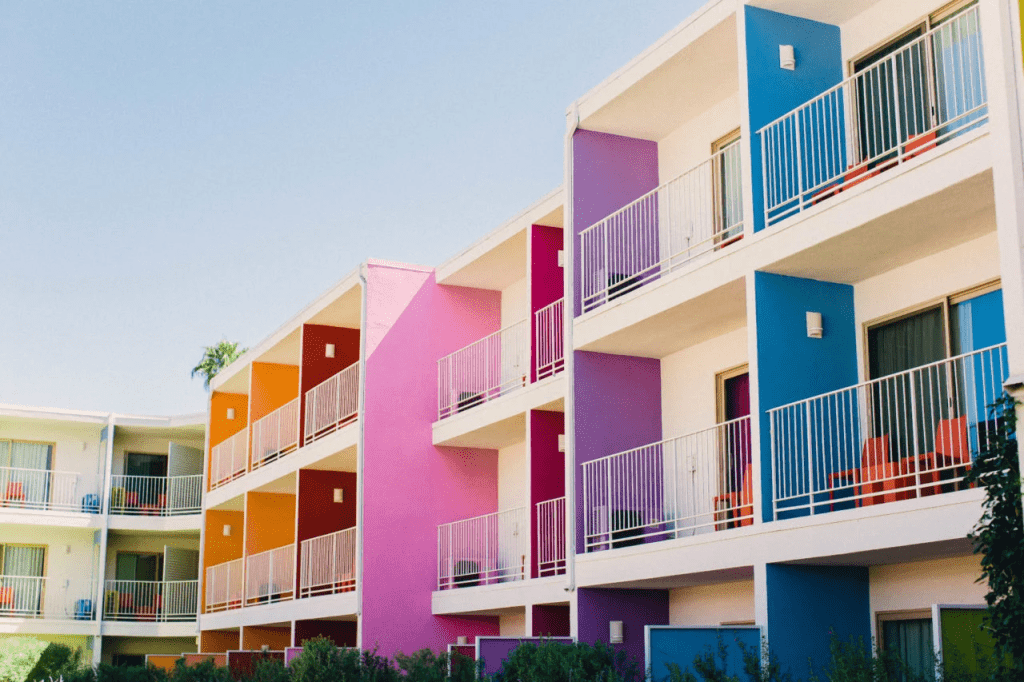Enhancing Space with Materials and Lighting
Reflections and Textures
The choice of materials also plays a significant role in how color and light interact within a space. Using materials with varying reflective properties—such as glossy, matte, or textured finishes—can amplify the Chromostereopsis effect. For instance, a matte wall might recede visually, while a glossy surface in a contrasting color can appear closer. This contrast in reflection adds another layer of depth to the room.
Strategic Lighting for Maximum Impact

One of the modern designs using Chromostereopsis. Photo: jams2blues
Lighting is crucial for creating the perfect environment in a Chromostereopsis-designed space. Light sources, when positioned thoughtfully, can highlight color contrasts and create shadows that further enhance the perception of depth. By using techniques like uplighting or spotlights on contrasting areas, designers can manipulate how the eye perceives the room’s dimensions, making it feel larger or more intimate depending on the desired effect.
Considerations for Using Chromostereopsis in Interiors
Achieving Color Balance
While Chromostereopsis can create stunning visual effects, it is essential to maintain balance. Overuse of bold contrasts can overwhelm the viewer and make the space feel chaotic. Designers should aim to create harmony between contrasting colors, ensuring they complement rather than clash. Experimenting with varying intensities of color can help strike the right balance and make the space visually appealing without overpowering the senses.

Choosing Strategic Focal Points
Incorporating Chromostereopsis into an interior design requires careful planning regarding focal points. Large surfaces like walls or floors can be used to showcase bold color contrasts, while smaller spaces like furniture or decor pieces can offer subtler pops of color. Strategic use of contrasting hues helps direct the viewer’s attention to key areas without overwhelming the room.
The Future of Chromostereopsis in Interior Design
Technological Advancements in Design
As technology advances, so too does the potential for Chromostereopsis to impact interior design. Tools like augmented reality (AR) and virtual reality (VR) allow designers to experiment with color contrasts and spatial perception before making any physical changes. This makes it easier to predict how the Chromostereopsis effect will influence a space and offers a more precise way to implement these design choices.
Sustainability and Eco-Friendly Design

With growing concerns over environmental impact, designers are turning to sustainable materials and finishes that enhance color contrast while minimizing environmental harm. Chromostereopsis can be incorporated into eco-friendly design, ensuring that both form and function are prioritized without sacrificing sustainability goals.
Collaborative Creations Across Disciplines
In the future, Chromostereopsis could be used in interdisciplinary design projects, particularly those involving neuroscience and psychology. By understanding how color contrast affects mood and behavior, designers can create environments that promote mental well-being and human development. This collaboration could lead to spaces designed not just for aesthetics but for emotional and psychological health as well.
Conclusion: Unlocking the Power of Color Contrast
Chromostereopsis offers an exciting avenue for interior design, allowing for the creation of spaces that engage the senses and provide depth and dimension through the simple yet powerful use of color contrast. By strategically applying this visual effect, designers can elevate rooms from static to dynamic, making them more immersive and visually captivating. As technology and design continue to evolve, the use of Chromostereopsis is sure to grow, influencing how we experience and interact with the spaces we live in.





